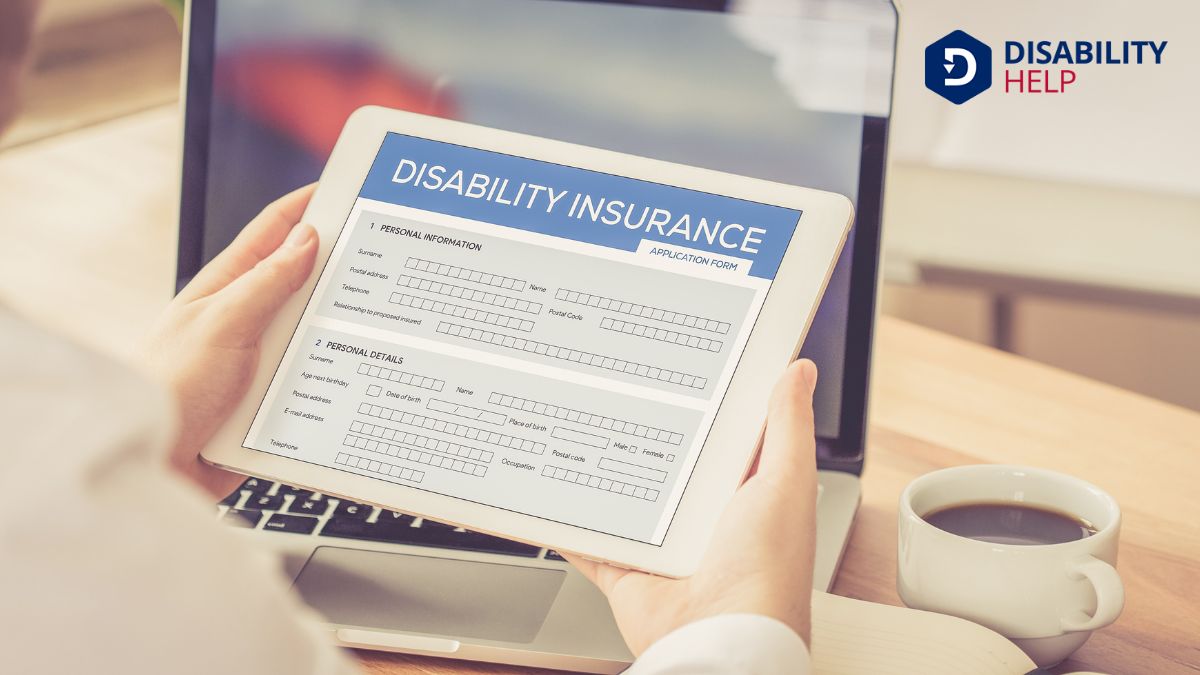Let's explore the landscape of state-sponsored disability insuranceA form of insurance that provides income to individuals who are unable to work due to a disability. programs in the U.S. Together, we'll uncover how these programs work, which states offer them, and what they mean for individuals unable to work due to illness or injury. With different states providing unique solutions to support their residents, there's a lot to unpack. Are you curious about how these programs might apply to you or someone you know? Let's plunge into it.
Key Takeaways
- Yes, five states and one territory offer state-sponsored disability insurance programs: California, Hawaii, New Jersey, New York, Rhode Island, and Puerto Rico.
- These programs typically provide short-term benefits for non-work-related illnesses or injuries.
- State-specific eligibility criteria include medical certification, sufficient recent work history, and minimum earnings requirements.
- Application processes involve submitting required documents and verifying eligibility through state-specific systems.
- Benefit amounts are based on pre-disability income percentages, with state-imposed maximum and minimum limits.
Understanding State-Sponsored Disability Insurance

While maneuvering through the complexities of disability insurance, we often encounter state-sponsored programs that play a crucial role in providing financial support to disabled individuals.
These programs are designed to help us navigate life's unforeseen challenges by offering a safety net when we need it most.
Each state may have its unique approach, with specific eligibility criteria and benefits tailored to its residents' needs.
Key Differences Between State and Federal Programs
As we explore the key differences between state and federal disability programs, we'll notice distinct eligibility criteria that can affect who qualifies for benefits.
Additionally, the funding sources for these programs vary, influencing how they're financed and sustained.
Finally, the coverage limits differ, impacting the amount and duration of benefits recipients receive.
Eligibility Criteria Differences
Understanding the eligibility criteria differences between state and federal disability insurance programs is essential for anyone maneuvering through these benefits.
When we look at the federal level, programs like Social Security Disability Insurance (SSDI)A U.S. government program that provides financial assistance to individuals who are unable to work d... require us to have a specific work history and sufficient Social Security credits.
On the other hand, state programs can vary greatly. Some states have their own disability insurance programs with distinct eligibility requirements, often focusing more on recent earnings rather than long-term work history.
We must recognize that while federal programs have standardized criteria, state programs offer more flexibility, catering to localized needs.
Funding Source Variations
When we explore funding source variations between state and federal disability insurance programs, it's clear these differences impact how each program operates.
Federal programs, like Social Security Disability Insurance (SSDI), draw from a national pool funded by payroll taxes. This centralized funding guarantees uniformity across states.
In contrast, state-sponsored disability programs often rely on state-specific funding mechanisms, such as dedicated taxes or employer contributions. This can lead to diverse program structures and benefits, reflecting each state’s economic conditions and policy priorities.
Understanding these variations helps us appreciate why some states can offer more robust programs than others.
It also underscores the importance of balancing local needs with national standards, guaranteeing that everyone has access to essential support when disability strikes.
Benefit Coverage Limits
Examining how state and federal disability programs are funded sheds light on another crucial aspect: the differences in benefit coverage limits.
State programs often provide short-term benefits, typically covering a few months to a year, while federal programs like Social Security Disability Insurance (SSDI) and Supplemental Security Income (SSI) offer long-term support based on specific eligibility criteria.
We should note that state programs usually replace a portion of your income, often capped at a maximum weekly benefit.
In contrast, federal programs calculate benefits based on your past earnings or established need. Understanding these distinctions helps us make informed decisions when applying for disability benefitsFinancial assistance provided to individuals who are unable to work due to a disability, such as Soc....
States That Offer Disability Insurance Programs
Although not all states offer disability insurance programs, several have recognized the significance of providing this safety net for their residents.
Currently, five states and one territory have established such programs: California, Hawaii, New Jersey, New York, Rhode Island, and Puerto Rico. Each of these programs is designed to offer short-term benefits to employees who can't work due to a non-work-related illness or injury.
We can see that these states have taken proactive steps to guarantee that their workforce has some financial protection during challenging times. By having these programs in place, they help ease the financial stress on individuals and families when unexpected health issues arise.
Knowing which states offer these benefits is vital when considering relocation or employment options.
Eligibility Criteria for State Disability Insurance
Understanding the eligibility criteria for state disability insurance is essential for anyone considering applying for these benefits. Each state with a disability insurance program has its own specific requirements, but there are common factors we should be aware of.
Generally, applicants must have a qualifying medical condition that prevents them from working. It’s important to review these criteria thoroughly to guarantee we meet all necessary conditions.
- Medical Certification: A healthcare provider must verify the disability.
- Work History: Sufficient recent work history in the state is usually required.
- Earnings: Applicants often need to have a minimum level of past earnings.
- Residency: Being a resident of the state offering the program is often necessary.
- Program-Specific Requirements: Each state may have additional unique conditions.
Understanding these factors helps us determine eligibility confidently.
How to Apply for State Disability Insurance
Applying for state disability insurance can seem challenging, but with the right guidance, we can navigate the process smoothly.
First, let's gather essential documents, such as proof of identity, medical records, and employment history. It’s vital we verify eligibility based on our state’s specific requirements.
Once we’ve confirmed eligibility, we can complete the application online or request a paper form from our state’s disability insurance office. Let’s make certain all information is accurate to avoid delays.
If we need assistance, contacting a representative from the office can provide clarification. After submitting the application, they’ll notify us of the decision within a few weeks.
Staying organized and proactive in following up can help us make sure the process moves efficiently.
Benefits and Coverage of State Disability Programs
Let's explore what state disability programs offer regarding benefits and coverage.
We'll look at who qualifies, how long coverage lasts, and how benefits are calculated.
Understanding these aspects helps us make informed decisions about our eligibility and potential benefits.
Eligibility Criteria Overview
When considering state-sponsored disability insurance programs, it's crucial to know who qualifies for benefits and coverage.
Eligibility criteria vary by state, but there are common elements we should all be aware of. Generally, these programs require that individuals have a recent work history and meet specific medical conditions.
Let’s break down some typical criteria:
- Employment Status: Must be employed or have been recently employed in the state.
- Medical Condition: Must have a qualifying medical condition that limits the ability to work.
- Earnings Requirement: Must meet minimum earnings requirements from state-covered employment.
- Application Timing: Must apply for benefits within a certain time frame after disability onset.
- State Residency: Must be a resident of the state offering the program.
Understanding these criteria helps us determine our eligibility for state disability benefits.
Coverage Duration Details
While managing state disability programs, we must understand how long benefits and coverage will last. Typically, the duration depends on the specific state's regulations and the nature of the disability. For short-term disabilities, coverage often ranges from a few weeks to several months, guaranteeing support during temporary recovery periods.
On the other hand, long-term disability programs might extend coverage for years, sometimes until retirement age, for ongoing conditions. We need to check each state's guidelines, as they can vary considerably.
It’s essential to note that extensions might be possible under certain circumstances, often requiring additional documentation or evaluations. By staying informed, we can better navigate these programs and guarantee that beneficiaries receive the appropriate duration of support they need.
Benefit Amount Calculation
Calculating the benefit amount in state disability programs involves understanding several key factors that directly influence the support an individual receives.
Let’s explore what determines these benefits. Our income before the disability plays a vital role, as it often sets the base for calculations. States usually set a percentage of this pre-disability income as the benefit amount. Additionally, there might be maximum and minimum limits imposed.
Some other factors include:
- Duration of employment: Longer employment may impact benefits.
- State regulations: Different states have varying rules.
- Dependent allowances: Having dependents can sometimes increase benefits.
- Contribution history: Our contribution to the program might affect eligibility.
- Type of disability: Temporary or permanent status can influence the amount.
Understanding these elements guarantees we're better prepared.
Navigating State-Specific Requirements

Maneuvering through state-specific requirements for disability insurance can be intimidating, but understanding the key differences between states is essential for ensuring compliance and maximizing benefits. Each state has unique regulations affecting eligibility, benefit amounts, and application processes.
We must first familiarize ourselves with our state’s rules, as some states offer their own programs while others rely on federal options. Knowing these distinctions helps us avoid missteps and navigate the application process smoothly.
We should also pay close attention to deadlines and required documentation, as these can vary considerably. Reaching out to state agencies and reviewing their online resources can provide clarity and guidance.
Conclusion
In summary, we’ve explored the critical role state-sponsored disability insurance programs play in supporting individuals during tough times. By understanding the distinctions between state and federal programs, knowing which states offer these benefits, and familiarizing ourselves with the eligibility criteria and application processes, we’re better equipped to navigate these essential resources. Let’s guarantee we take advantage of the support available, providing an important safety net for ourselves and our communities when we need it most.






